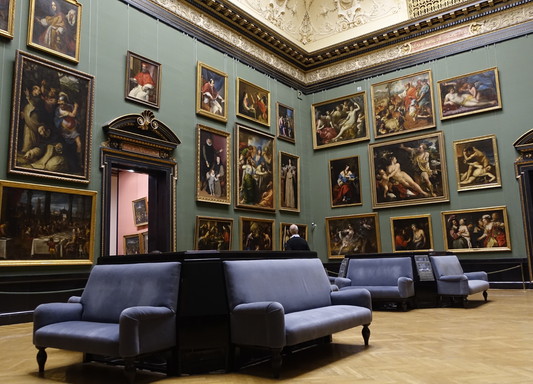The Mona Lisa, painted by Leonardo da Vinci between 1503 and 1506, is not just a masterpiece of the Italian Renaissance but a cultural phenomenon that transcends time and geography. Its journey from the artist’s studio in Florence to its current home in the Louvre has been marked by intrigue, theft, and endless admiration. The portrait’s enigmatic smile, the delicate brushstrokes, and da Vinci’s masterful use of light have all contributed to its status as one of the most famous works of art in the world.
The Creation of a Masterpiece
The Mona Lisa was conceived in an era when da Vinci was pushing the boundaries of artistic expression. Commissioned by Florentine merchant Francesco del Giocondo, the portrait is widely believed to depict his wife, Lisa Gherardini. Yet, this identification is shrouded in as much mystery as the painting’s subject herself. Some speculate that the painting may represent an idealised form of womanhood, while others believe it might even be a subtle self-portrait.
What makes the Mona Lisa exceptional, even among da Vinci’s works, is the master’s innovative use of sfumato, a technique that allows for the seamless transition between colours and tones. This results in the ethereal, almost intangible quality of the figure, where her expression appears to shift depending on the viewer’s perspective. The background, a dreamlike landscape, only adds to the mystique, making the painting a timeless exploration of both beauty and ambiguity.
A Theatrical Theft: The 1911 Heist
Though already admired, the Mona Lisa became a global icon after its dramatic theft from the Louvre in 1911. The painting disappeared for two years, during which time the world speculated on its fate. Italian nationalist Vincenzo Peruggia, a former museum employee, had stolen it, believing it belonged in Italy. Its recovery in 1913 turned the Mona Lisa into a media sensation, further solidifying its legendary status.
The theft marked a turning point in the painting’s history, drawing unprecedented attention and propelling it from a celebrated artwork to a global symbol of intrigue and cultural heritage. Crowds flocked to the Louvre to view the empty space where the portrait once hung, amplifying the aura of mystery surrounding it.
Controversies and Protection
Over the years, the Mona Lisa has been the subject of various attacks, both physical and metaphorical. In 1956, the painting was damaged by vandals twice—once with acid and another time by a rock. These incidents led to the installation of bulletproof glass, which now surrounds the painting, allowing it to be viewed by millions each year while ensuring its protection.
Beyond physical damage, the painting has been subject to reinterpretation and parody, most notably by the Dadaist Marcel Duchamp, who provocatively added a moustache to a postcard of the painting in 1919. These acts, rather than diminishing its status, only serve to highlight the Mona Lisa’s position as a touchstone of artistic commentary and cultural reflection.
Cultural Impact: From Renaissance Masterpiece to Pop Icon
The influence of the Mona Lisa extends far beyond the walls of the Louvre. It has inspired countless adaptations, from Andy Warhol’s pop art renditions to Nat King Cole’s iconic ballad Mona Lisa, in which he muses, “Are you warm, are you real, Mona Lisa, or just a cold and lonely, lovely work of art?” This song captures the duality of the painting—both a revered masterpiece and an enigma that invites infinite interpretation.
In film, literature, and music, the Mona Lisa serves as a symbol of beauty, mystery, and unattainability. Its face is recognised by millions, but its essence remains elusive, much like the human condition it so deftly represents.
Legacy: A Timeless Icon
The Mona Lisa is more than just a painting; it is an enduring symbol of art’s ability to transcend time. From its groundbreaking techniques to its storied history, the portrait continues to captivate and inspire. Its legacy, rooted in the genius of Leonardo da Vinci, is one of continual reinvention. It remains a reflection of the changing cultural and artistic landscapes, inviting new generations to grapple with its mysteries and marvel at its beauty.
In the heart of Paris, nestled in the Louvre’s grandeur, the Mona Lisa stands not just as a relic of the past but as a living testament to art’s power to stir the soul and transcend the ordinary. Its story, much like its subject, is far from finished—its influence as enduring as the smile that has enchanted the world for over 500 years.





